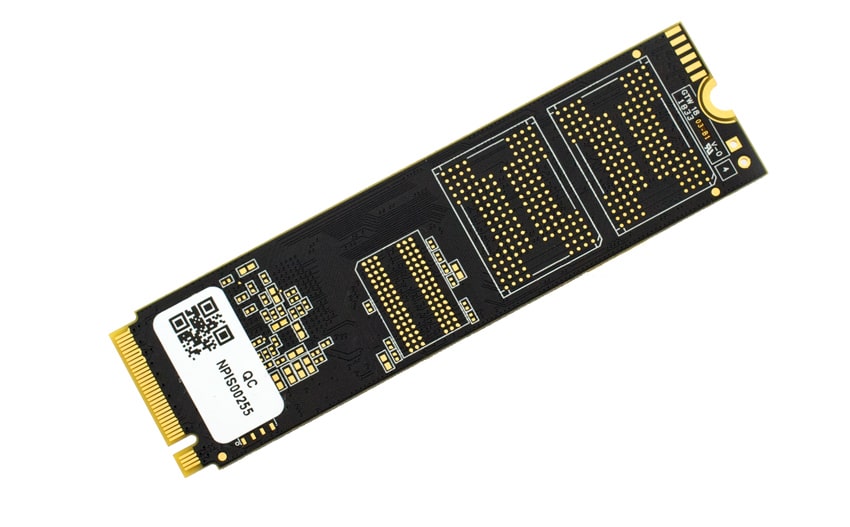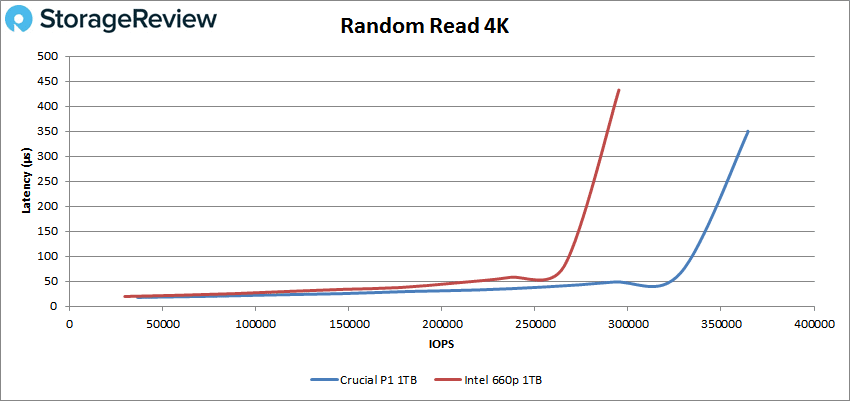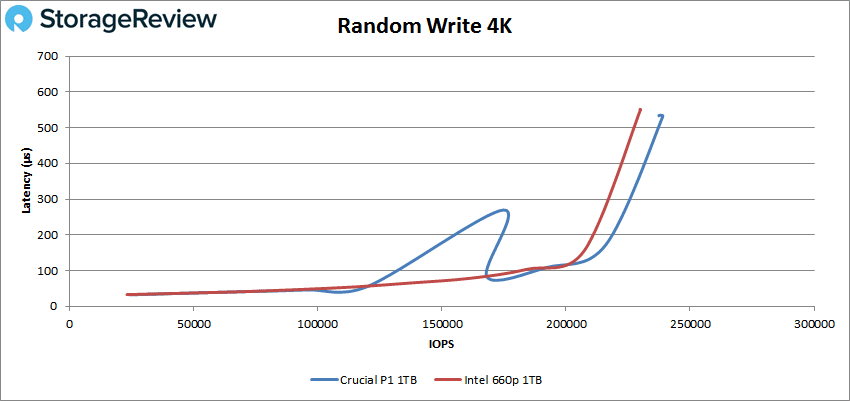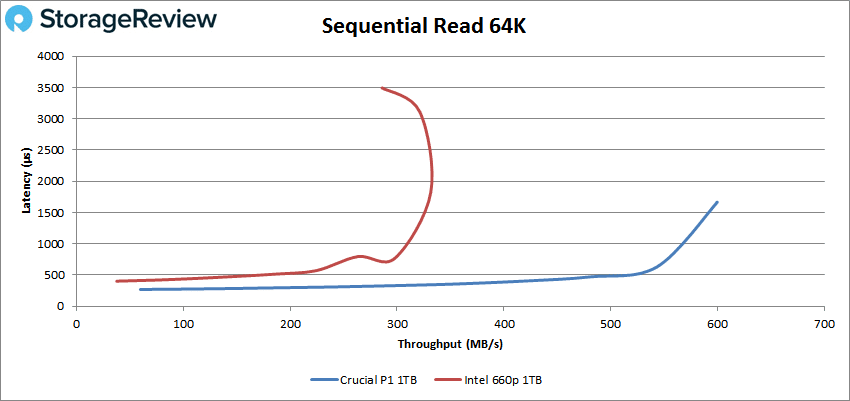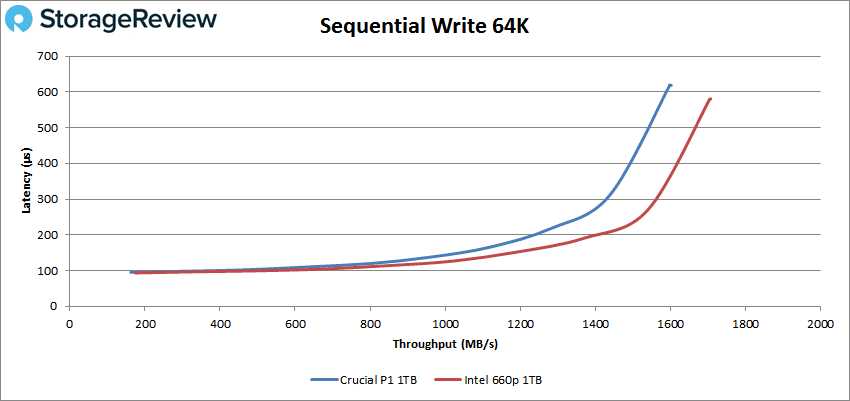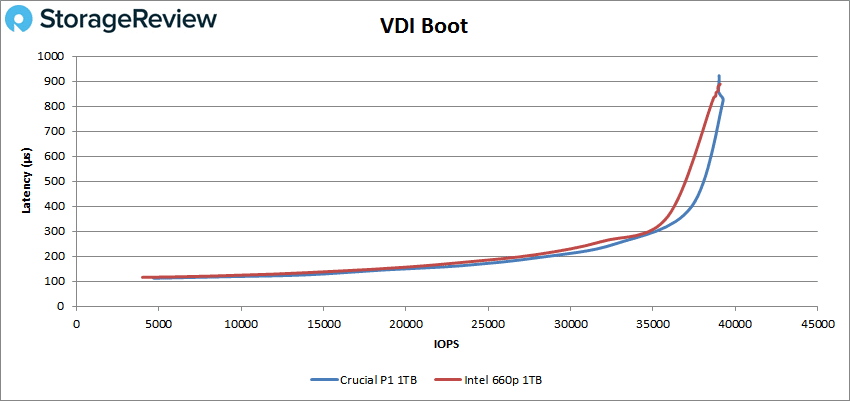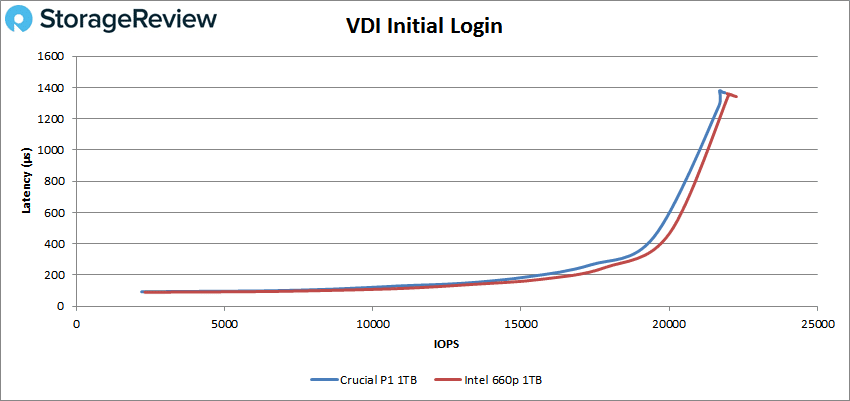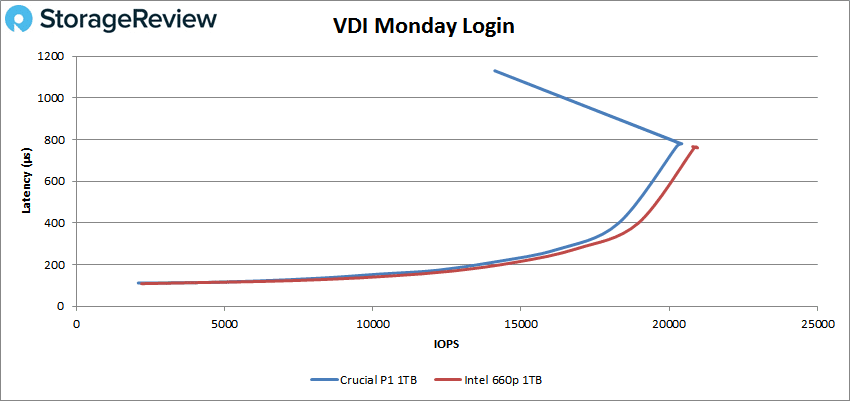
Launched today, the Crucial P1 SSD is the company’s latest drive targeted towards end users who want the benefits of NVMe technology in a more affordable package. The Crucial P1 features QLC NAND, which promises to further drive down prices, at the expense of write performance when compared to TLC or MLC products. The P1 comes in 500GB and 1TB capacities (with a 2TB to be announced in the future) and, perhaps most importantly, comes with a 5-year warranty.
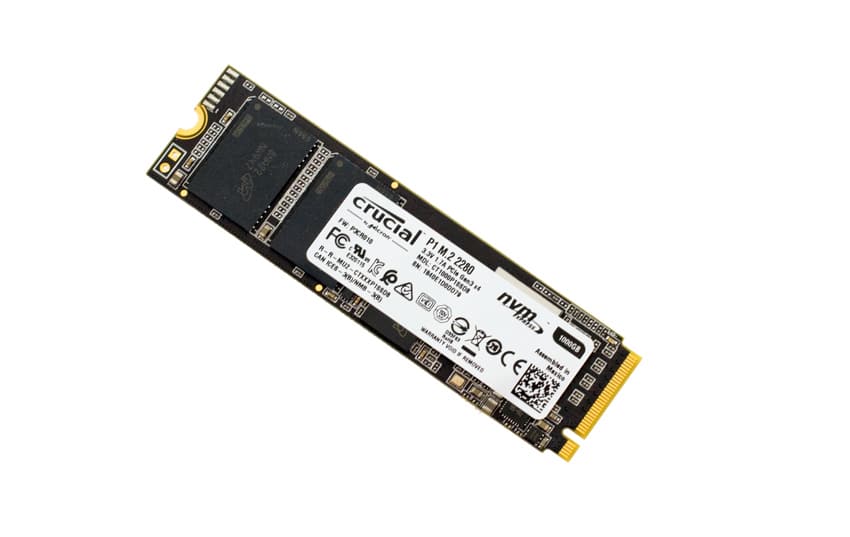
Concerning performance the P1, which leverages Micron NAND, is quoted to deliver enough output to satisfy those looking to boost gaming performance and aid prosumers looking for a reliable SSD to store their data. Moreover, the M.2 form factor provides users more flexibility and allows easy installation in desktops and notebooks. Reliability and endurance figures are quoted at 1.8Mhrs MTBF and up to 200TBW, respectively.
The Crucial P1 1TB comes with a 5-year limited warranty and can be picked up for $110 and $220 for the 500GB and 1TB capacities respectively.
Crucial P1 Specifications
| Form Factor | M.2, 22mm x 80mm | |
| Interface | NVMe/PCIe Gen3 x4 | |
| NAND Flash Memory | Micron 3D QLC | |
| Capacity | 500GB | 1TB |
| Performance | ||
| Sequential 128KB Read | 2000MB/s | |
| Sequential 128KB Write | 1700MB/s | |
| Random Read 4K | 170K IOPS | |
| Random Write 4K | 240K IOPS | |
| TBW | 200TB | |
| MTBF | 1.8Mhrs | |
| Shock | 1500G/0.5ms | |
| Vibration | 5-800Gz @3.1G | |
| Humidity | 5-95% | |
| Operating Temperature | 0 °C to 70 °C | |
| Non-operating Temperature | -40 °C to 85 °C | |
| Warranty | 5-year | |
Performance
Testbed
The test platform leveraged in these tests is a Dell PowerEdge R740xd server. We measure SAS and SATA performance through a Dell H730P RAID card inside this server, although we set the card in HBA mode only to disable the impact of RAID card cache. NVMe SSDs are tested natively through an M.2 to PCIe adapter card. The methodology used better reflects end-user workflow with the consistency, scalability and flexibility testing within virtualized server offers. A large focus is put on drive latency across the entire load range of the drive, not just at the smallest QD1 (Queue-Depth 1) levels. We do this because many of the common consumer benchmarks don’t adequately capture end-user workload profiles.
To more appropriately test the QLC-based SSDs we modified our consumer testing methodology to better reflect how these drives are designed to work out in the field. Compared to MLC or even TLC products, QLC-based SSDs have a very small continuous write ability. QLC SSDs mitigate this through adaptive SLC caching, but the short version of the story is after writing 10-15GB of data to the SSD at once, write speeds will drop from 1,500MB/s down to 100MB/s. Manufacturers see this drive instead working in burst activity, where users mostly read data from the drive, or write in chunks, allowing the drive to stay in the faster performance zone. To accomadate this workload, we modified our testing process to partition 1% of the drive surface, instead of 5% that we would traditionally test for a consumer product. In the case of the 1TB Crucial P1, this gives us a testing footprint of 10GB. We also don’t do a 100% prefill of the SSD before starting our workloads for QLC SSDs.
VDBench Workload Analysis
In our first VDBench Workload Analysis, we looked at random 4K read performance. Here, the Crucial P1 outperformed the Intel 660p with 364,350.6 IOPS at a latency of 350.2μs.
It was a close race with 4K random write with the Crucial P1 barely stealing the lead with 237,481 IOPS and a latency of 553.4μs.
In sequential performance testing, we first looked at the 64K read benchmark. Here, the P1 leaped way ahead of the competitor with 9,589.74 IOPS or 599.35MB/s at a latency of 1,664.3μs.
Looking at sequential 64K writes, we see that the two drives are again neck-to-neck, this time with the Intel 660p taking the lead. The P1 fell behind with a peak performance of 25,625 IOPS or 1,601MB/s with a latency of 618.5μs.
Next, we looked at our VDI benchmarks, which are designed to tax the drives even further. These tests include Boot, Initial Login, and Monday Login. Looking at the Boot test, the P1 was nearly equal in performance with the 660p, ending with 39,023 IOPS and a latency of 922.4μs.
For the VDI Initial Login, a very similar story is told with both competitors showing nearly identical results. The Crucial P1 finished with 21,880 IOPS and a latency of 1,366.6μs.
For the final VDI Monday Login, the P1 fell behind the 660p, ending with 20,233 IOPS at a latency of 787.5μs.
Conclusion
The Crucial P1 is the newest series of M.2 drives, with capacities ranging from 500GB to, soon to be, 2TB. The Crucial P1 SSD comes equipped with Micron quad-level cell (QLC) NAND, enabling increased NAND density at a lower cost, providing a huge capacity at an affordable pricing model.
For performance, the drive did well when considering the target audience and comparing it to another QLC product in the same segment. In 4K random read and write, the P1 was triumphant against the 660p with 364K IOPS read and 237K IOPS write. In sequential 64K read, the P1 was extremely dominant with 599MB/s, and only barely fell behind in sequential 64K write with 1.6GB/s. With VDI Boot and Initial Login, the two drives were basically equal, showing very little difference in results. The P1 did, however, fall short in VDI Monday Login with a peak of 20K IOPS before falling off, giving the 660p a win with this test. Overall, the Crucial P1 drive didn’t disappoint in the QLC SSD segment.
Despite the gaming positioning, the drive really should be viewed as a solution for mainstream users wanting the benefits of flash but the economics of hard drives. When looked at through that lens, the Crucial P1 offers increased speeds over hard drives or older SSDs and satisfies end users seeking reliable storage at a fair price. The P1 is definitely the clubhouse leader for this new breed of QLC drives.
Sign up for the StorageReview newsletter

